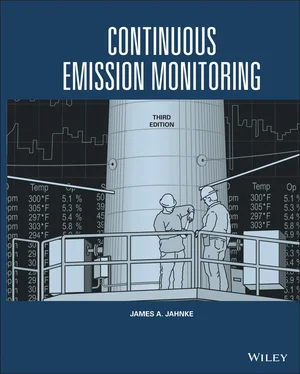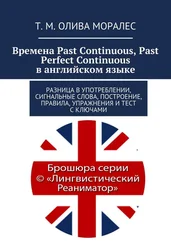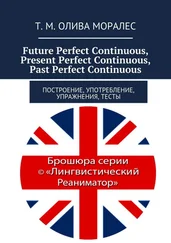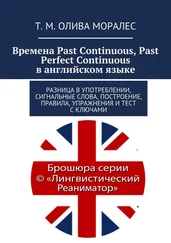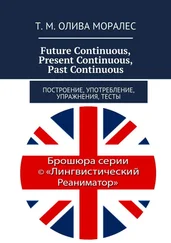James A. Jahnke - Continuous Emission Monitoring
Здесь есть возможность читать онлайн «James A. Jahnke - Continuous Emission Monitoring» — ознакомительный отрывок электронной книги совершенно бесплатно, а после прочтения отрывка купить полную версию. В некоторых случаях можно слушать аудио, скачать через торрент в формате fb2 и присутствует краткое содержание. Жанр: unrecognised, на английском языке. Описание произведения, (предисловие) а так же отзывы посетителей доступны на портале библиотеки ЛибКат.
- Название:Continuous Emission Monitoring
- Автор:
- Жанр:
- Год:неизвестен
- ISBN:нет данных
- Рейтинг книги:4 / 5. Голосов: 1
-
Избранное:Добавить в избранное
- Отзывы:
-
Ваша оценка:
- 80
- 1
- 2
- 3
- 4
- 5
Continuous Emission Monitoring: краткое содержание, описание и аннотация
Предлагаем к чтению аннотацию, описание, краткое содержание или предисловие (зависит от того, что написал сам автор книги «Continuous Emission Monitoring»). Если вы не нашли необходимую информацию о книге — напишите в комментариях, мы постараемся отыскать её.
The new edition of the only single-volume reference on both the regulatory and technical aspects of U.S. and international continuous emission monitoring (CEM) systems Continuous Emission Monitoring
Continuous Emission Monitoring:
Continuous Emission Monitoring, Third Edition
Continuous Emission Monitoring — читать онлайн ознакомительный отрывок
Ниже представлен текст книги, разбитый по страницам. Система сохранения места последней прочитанной страницы, позволяет с удобством читать онлайн бесплатно книгу «Continuous Emission Monitoring», без необходимости каждый раз заново искать на чём Вы остановились. Поставьте закладку, и сможете в любой момент перейти на страницу, на которой закончили чтение.
Интервал:
Закладка:
The NOx Budget Program (NBP)
To reduce the regional transport of ozone in the Northeastern United States, the U.S. EPA instituted a NO xcontrol program, known as the NO xBudget Program, which was operated by the 20 eastern states plus Washington DC. The trading program began in 2003 and was discontinued in 2008. In the program, NO xemissions were capped for affected sources and NO xallowances were traded between sources under the program rules during the summer ozone season. The NO xBudget Program differed from the acid rain program in that it was administered by the states under State Implementation Plans, whereas the acid rain program is administered directly by the Federal EPA. In addition to the electric utilities, sources such as cement plants, petroleum refineries, and pulp and paper mills also participated in the program. The U.S. EPA provided guidance through the requirement of 40 CFR 96 to achieve consistency between the state programs (U.S. EPA 1998).
As in the acid rain program, an essential program component was the determination of the yearly NO xmass emissions. CEM systems incorporating NO xmonitors, flow monitors, diluent gas monitors, and a DAHS provided the basis for these determinations. Because CEM systems for SO 2and NO xhad already been installed on fossil‐fuel electric generating units and other sources in the Part 60 and Part 75 programs, the primary impact on their monitoring requirements was in modifying CEM system software to accommodate the NO xBudget reporting requirements. NO xBudget CEM system certification and performance requirements referenced those of Part 75.
The Clean Air Interstate Rule (CAIR)
The NO xBudget Program was replaced by the Clean Air Interstate Rule in 2009 although the rule had been issued originally in 2005. The rule extended the NBP affecting 27 states plus Washington DC. CAIR included three interstate cap‐and‐trade programs: (i) the CAIR SO 2trading program, (ii) the CAIR NO xannual trading program, and (iii) the CAIR NO xozone season trading program. About 70% of the CAIR NO xozone season units used CEM systems to measure NO xemissions (U.S. EPA 2010, 2014b). Lower‐cost monitoring alternatives were used for low‐emitting and infrequently operating gas and oil units.
After a training year in 2008, the CAIR NO xozone season and NO xannual programs began in 2009 and the CAIR SO 2program in 2010. This was after several court challenges that resulted in CAIR being vacated by the D.C. Court of Appeals in 2008, but remanded back to EPA until new rules could be developed to replace the program. CAIR was eventually replaced by the Cross‐State Air Pollution Rule (CSAPR), which was proposed in 2011, but was not implemented until 2015.
The Cross‐State Air Pollution Rule (CSAPR)
The Cross‐State Air Pollution Rule was proposed in 2011 as a replacement for CAIR, but was in turn vacated by the D.C. Circuit Court of Appeals in 2012 after judicial review. The U.S. Supreme Court reversed the decision of the Court of Appeals in April of 2014 and the stay was lifted in October 2014. Phase I of CSPAR began on 1 January 2015, but an update to the rule (the CSAPR Update) was finalized in September 2016.
CSAPR differs from CAIR in its level of stringency and trading restrictions. In CSPAR, allowance allocations are reduced from those in CAIR, and interstate trading is restricted. Despite the legal issues and shifting bases of the NO xcontrol programs, using cap‐and‐trade policies as a tool, they have been successful in decreasing NO xemissions below the original target levels (Shouse 2018).
Ultimately, this history is not important to the CEM engineer, particularly since CEM requirements, based on Part 75, were not affected by the judicial issues. In the end, with the addition of control equipment and the increasing availability of natural gas over the decade, the electric utilities were able to meet NO xemission limitations.
Other Cap‐and‐Trade Programs
A number of other cap‐and‐trade programs have been initiated by the states. In California, the 1994 Regional Clean Air Incentives Program (RECLAIM) was one of the first programs to be implemented by a state (Lents and Leyden 1996). It established emission reduction targets for SO 2and NO x, along with detailed protocols similar to those of Part 75. RECLAIM was discontinued in 2018; however, California currently participates in a Western Climate Initiative (WCI) CO 2trading program. The northeastern U.S. states participate in the Regional Green House Gas Initiative (RGGI) CO 2trading program.
A local trading program is active in the Houston‐Galveston area, where the numerous petroleum refineries and chemical companies have made it difficult to meet ambient air standard for ozone.
Here, the “Highly Reactive Volatile Organic Carbon (HRVOC)” cap‐and‐trade program requires the continuous monitoring of speciated volatile organic compounds, precursors to ozone formation. Flares, process vents, cooling towers, and fugitive emissions are affected by the program.
Discretionary Programs
Actions such as issuing permits give an agency a great deal of flexibility for achieving its goals. The ability of an agency to incorporate continuous monitoring requirements as part of these actions is within the agency's “discretionary authority.” Discretionary programs include:
Variances .Under special circumstances, a temporary authorization, called a variance, may allow a source to discharge pollutants in excess of the standard that would normally apply. A variance is generally issued for a specific time period, requiring that the source correct the problem and meet the standard by the end of the period. Special monitoring requirements are often included in the provisions of such variances.
Orders . Orders to comply with state agency requirements can be issued to a source under the enforcement authority given in Section 113 of the Clean Air Act. There are several types of orders: administrative orders, delayed compliance orders, and court orders. These orders differ with respect to the type of legal authority it takes to issue them.
Agreements . Agreements are often a result of bargaining between an agency and a source. Again, the purpose of any agreement is for the source to come into compliance with applicable regulations. As with orders, there are several types of agreements, each differing with respect to the level of authority or legal action exercised. Consent decrees, stipulation agreements, and court settlements are found in this group.
The use of discretionary authority allows fairness to be applied in regulatory programs. For example, a source may be able to gain time to install new control equipment by agreeing to the installation of a compliance CEM system. However, state discretionary authority can also result in arbitrary regulation since it does not have the extensive public oversight that rulemaking does.
PERFORMANCE SPECIFICATIONS
To this point, we have discussed implementing rules for CEM systems, rulemaking requiring the installation of a CEM system on a source category or a specific unit of a source. The implementing rule, however, is not complete unless it refers to some procedure that can be used to verify that the installed CEM system can provide data at a specified level of accuracy and precision. The level of accuracy can vary with the rule, depending upon the pollutant and the purpose of the rule. However, some verification procedure must be established so that the installed system can be shown to provide emissions data suitable to meet the purposes of the implementing rule.
Читать дальшеИнтервал:
Закладка:
Похожие книги на «Continuous Emission Monitoring»
Представляем Вашему вниманию похожие книги на «Continuous Emission Monitoring» списком для выбора. Мы отобрали схожую по названию и смыслу литературу в надежде предоставить читателям больше вариантов отыскать новые, интересные, ещё непрочитанные произведения.
Обсуждение, отзывы о книге «Continuous Emission Monitoring» и просто собственные мнения читателей. Оставьте ваши комментарии, напишите, что Вы думаете о произведении, его смысле или главных героях. Укажите что конкретно понравилось, а что нет, и почему Вы так считаете.
